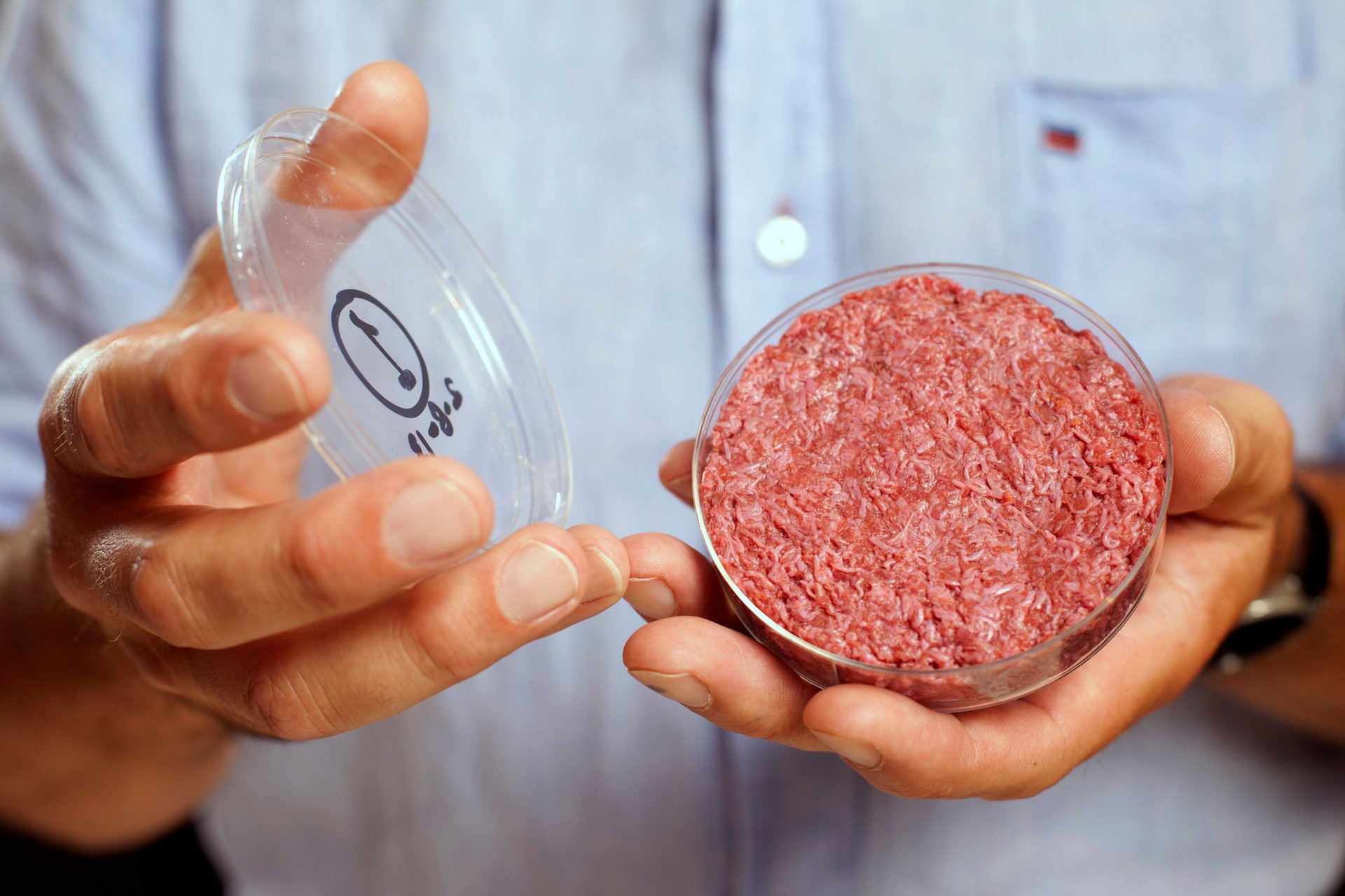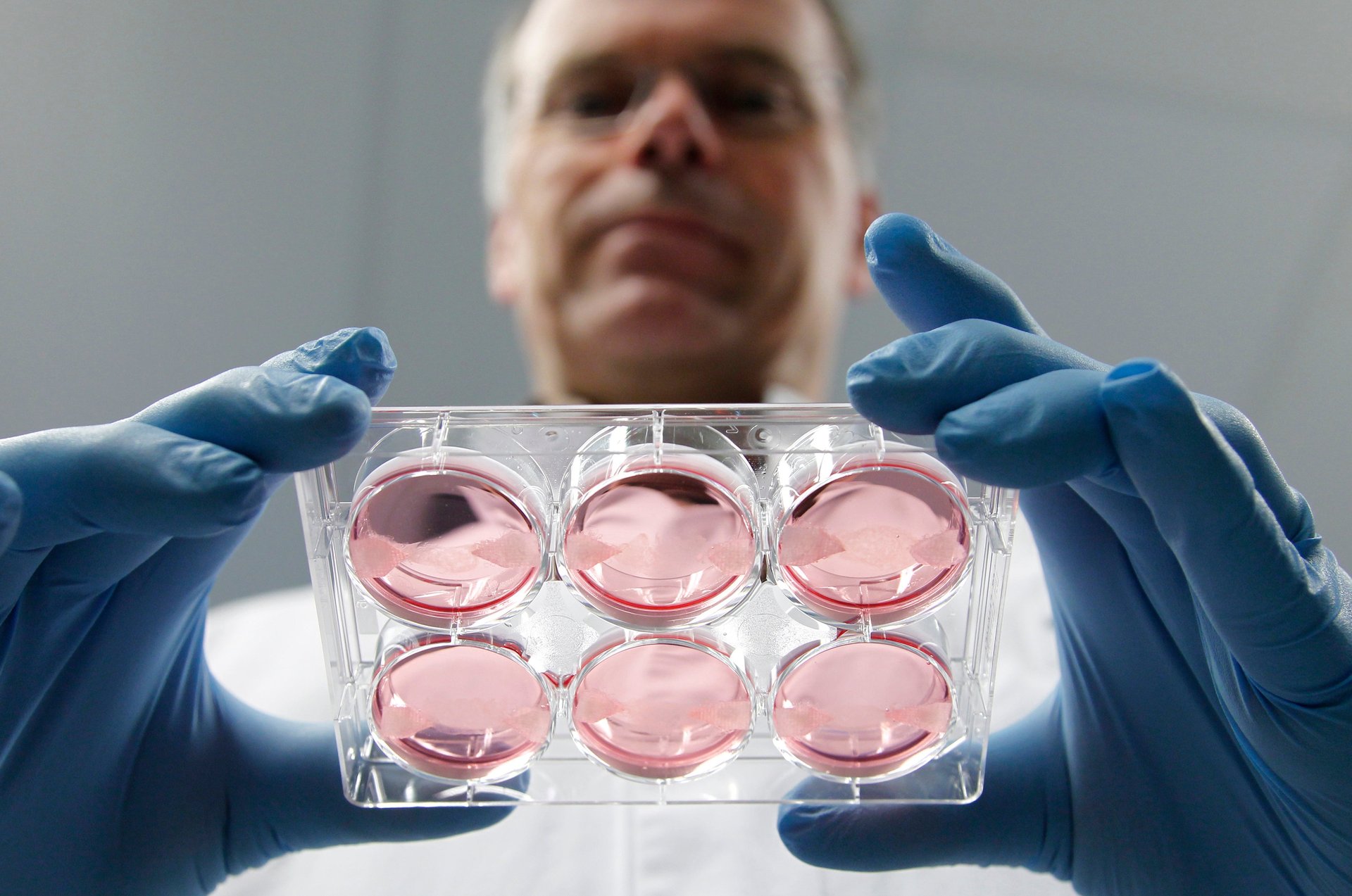The future of food is farming cells, not cattle
This story is part of What Happens Next, our complete guide to understanding the future. Read more predictions about the Future of Food.


This story is part of What Happens Next, our complete guide to understanding the future. Read more predictions about the Future of Food.
We’ve become incredibly efficient at producing animal products for humans. Through innovations in animal husbandry, animals can be reared for meat and produce more milk and eggs faster than ever before. Dairy cows, for example, produce four times more milk than they did 75 years ago.
But we’re reaching the upper limit of how much longer we can do this for. According to a report published by the United Nations Food and Agriculture Organization, livestock grazing takes up 26% of Earth’s ice-free land, and an additional 33% of arable land is used to grow the food that feeds them. This set-up is also susceptible to unpredictable events, such as epidemic viruses, antibiotic resistance, and weather incidents like rogue snow storms and heat waves.
We’ve created a precarious agricultural system. The safest way to move forward is to diversify our animal agriculture portfolio like we diversify energy. In the same way we’ve introduced alternative forms of energy to lessen our dependence on coal, we need to introduce new ways of producing animal products to lessen our dependence on industrial animal farming.
One of the most important ways to do that is through cellular agriculture. This is the process of producing animal products from cells rather than from whole animals. Instead of raising a cow from calf to slaughter—and requiring all of the feed, water, and land that goes with it—we can create animal proteins without the farm.

This could introduce completely new food systems. By producing proteins from cells, it’s possible to make food in places where agriculture didn’t take place before. We may also be able to repurpose existing arable land that is currently being used to grow corn and soy for animal feed.
Cellular agriculture could do more than just feed us: The flow-on effects could help the environment, too. Estimates show that cell cultured-meat would require far less water and produce far less greenhouse gas.
It’s also potentially better for our health: If we weren’t so reliant on concentrated animal farming operations, we could rein in problems with epidemic viruses and antibiotic resistance. Right now, the vast majority of antibiotics are manufactured and used for farm animals, not for human beings. The development of antibiotic resistance could be one of the biggest threats to global public health. Moving toward more controlled, clean systems for animal product manufacturing may help us reduce our dependence on antibiotics in farming.
While this is all promising, it remains to be seen what those scaled-out processes look like. Right now, a lot of cellular agriculture work is exploratory research being done on a small scale in laboratories. But it is possible that this research could lead us to producing meat in factories that resemble breweries rather than barns.
There are four main parts to this cellular production:
- First, you need cells from an animal that you culture outside of that animal.
- Second, you need a scaffolding material: Muscle cells need something adhere to in order to mature and grow into long muscle fibers. We’re currently exploring how to grow cells on scaffolds made of plants.
- The third is media, which is like the feed for cells. They need something to consume in order to grow and divide.
- And then last is the bioreactor: It’s the industrial machinery where all this cell growth will take place. It controls the temperature and acts like the body that is no longer provided by an animal.
One of the biggest challenges today is that the status quo ingredient for culturing tissue is fetal bovine serum, which is as bad as it sounds. It’s an incredibly expensive, and in some ways incredibly cruel animal product to procure. We need to find a way outside of using this animal byproduct for cell culture. I’m very confident that it’s absolutely possible, but it’s just a matter of doing that science.
There are many different ways we can save the future of food—but we need to approach this problem from all angles. In order to contribute to food security and environmental sustainability, there’s no doubt that the easiest thing to do today is to move towards a plant-based diet. But that’s a message that a lot of other groups are working on, and I think it can be complemented by this new cellular agriculture technology, too.
That said, a lot more research has to be done; the science is very nascent, and the economics of this is still very much up in the air. There have been some preliminary studies on how the cost can be brought down, but they’re all quite speculative.
For now, the biggest challenge is mass confusion. Everyone asks when lab grown meat is going to be on store shelves, and to me that implies that there is an endpoint to the pursuit of cellular agriculture. But the endpoint isn’t a product. This is much bigger: Cellular agriculture is a whole new industry—a whole new field of science, and a whole set of products that can change the way that food lands on our tables.
This story is part of What Happens Next, our complete guide to understanding the future. Read more predictions about the Future of Food.